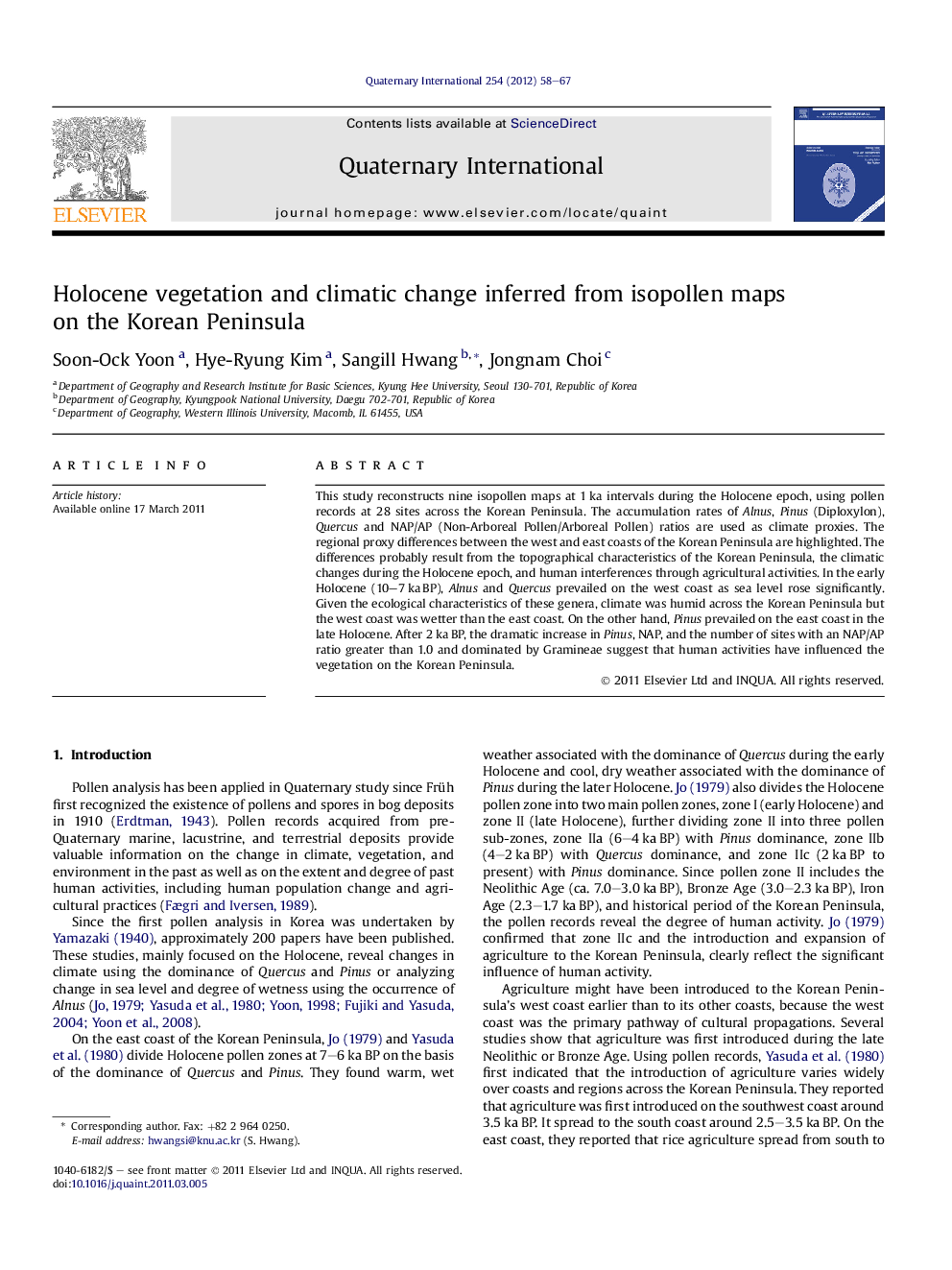| کد مقاله | کد نشریه | سال انتشار | مقاله انگلیسی | نسخه تمام متن |
|---|---|---|---|---|
| 1043017 | 1484231 | 2012 | 10 صفحه PDF | دانلود رایگان |

This study reconstructs nine isopollen maps at 1 ka intervals during the Holocene epoch, using pollen records at 28 sites across the Korean Peninsula. The accumulation rates of Alnus, Pinus (Diploxylon), Quercus and NAP/AP (Non-Arboreal Pollen/Arboreal Pollen) ratios are used as climate proxies. The regional proxy differences between the west and east coasts of the Korean Peninsula are highlighted. The differences probably result from the topographical characteristics of the Korean Peninsula, the climatic changes during the Holocene epoch, and human interferences through agricultural activities. In the early Holocene (10–7 ka BP), Alnus and Quercus prevailed on the west coast as sea level rose significantly. Given the ecological characteristics of these genera, climate was humid across the Korean Peninsula but the west coast was wetter than the east coast. On the other hand, Pinus prevailed on the east coast in the late Holocene. After 2 ka BP, the dramatic increase in Pinus, NAP, and the number of sites with an NAP/AP ratio greater than 1.0 and dominated by Gramineae suggest that human activities have influenced the vegetation on the Korean Peninsula.
Journal: Quaternary International - Volume 254, 16 March 2012, Pages 58–67